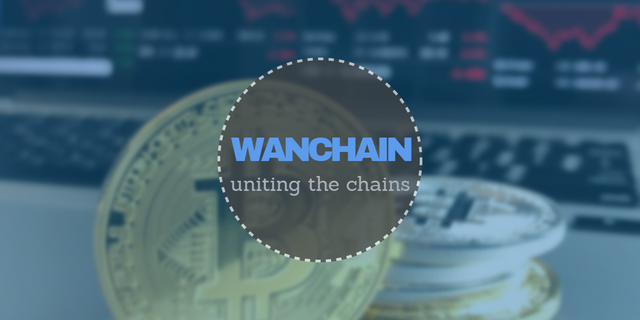WANCHAIN | Integrating the world's financial systems


The problem is having blockchain projects that stand as islands on various spots in the abstract realm. We need a system that solves the problem of interaction among these various projects but using a similar model (i.e. a decentralized model). Here is where WANCHAIN comes to the aid, in that it creates functions as a uniter of chains and with it, we can have real time interaction between various blockchain projects. In one word, WANCHAIN is bridging the various blockchain projects out there.
WANCHAIN is creating a link between independent cryptocurrency/blockchain projects.
WANCHAIN is a distributed ledger that does the following for blockchain projects;
- achieves the interconnection and interoperability between different and independent blockchain networks or projects
- completes records of transactions between different blockchains.
- keeps and maintains cross-chain transaction details.
WANCHAIN supports inter-blockchain transactions between mainstream public chains to public chains, private chains to private chains, and also between public and private chains.
It is important to know a little about the architecture and the design of the model that makes this all possible. So for a brief moment, I will be talking about the Wancoin (the native coin for all trade and commerce within the WANCHAIN ecosystem), the consensus mechanism, and the cross-chain integration (inter-blockchain integration).
The WANCOIN
The good thing is that this will be cost effective since WANCHAIN has a native currency that will be used for all payment and charges within the system.
This is no new thing regarding this because, like most blockchain projects, WANCHAIN is using a native currency that is exchanged for value which is the use of its services. The coin will serve as a medium of exchange and a tool for both cross and intra chain transactions. The token is also used for a wide range of things within and outside the WANCHAIN ecosystem.
Consensus Mechanism
WANCHAIN uses a Proof of Stake (POS) consensus mechanism for normal or ordinary transactions while it uses consensus and incentive mechanisms for transactions that are cross-chain. The idea of Proof of Stake as against the Proof of work demands that consensus be reached through a process described as follows;
Proof-of-Stake algorithms gets to achieve consensus by requiring every user to stake a certain amount of their tokens (coins) in order to have a chance of being selected to validate blocks of (trustless) transactions, and get rewarded for doing so.source
The model is cost effective unlike the initial PoW model that consumes a lot of energy, requires a high computation skill and constantly faced with the threat of centralization. Above all, the essence of both is that users are granted incentives to validate the transaction of other users in a manner that is seamlessly trustless. So it is important to know that WANCHAIN uses the Proof of Stake mechanism and that makes it cost effective.
Cross-Blockchain Integration
In order to be fully integrated with WANCHAIN, blockchains and their assets would first need to register on the WANCHAIN system to ensure that they get their unique identities. These functions are made possible through chain and asset registration protocols. In the case of a cross-chain transaction, a secure multiple-party computing threshold secret-sharing joint anchoring schemes is used to achieve minimal cost. And this is done through a cross-chain communication protocol without having to change the original implementation of the chain.
WANCHAIN is a single project that can be applied to any type of financial application with privacy protection for transactions on both public and private blockchains. It is also important to know that every projects or blockchain integrating with WANCHAIN will have access to the same features and benefits that homogeneous WANCHAIN’s blockchains have access to which will include seamless integration with each other.
Wanchain is a complete platform that can be applied to broad financial applications with privacy protection for smart contract token transactions of public and private chains. What’s more important is that other blockchains developed on Wanchain are equivalent to the homogeneous blockchains of Wanchain and have the same cross-chain mechanism and seamless integration with each other.
Thank you for reading this blog. I would like you to know that this is not all that there is to know about WANCHAIN. So if you would like to know more, please do visit the links embedded below this concluding paragraph for more details. This is Bait and I am bringing words from the Offline Minnow School.
shared on social media;

on facebook;
https://web.facebook.com/sotuboololade
on twitter;

https://twitter.com/horlorlahdeh/status/1051210169026252800
on linkedin;

https://www.linkedin.com/feed/update/urn:li:activity:6456975932421996544
on google+;

https://plus.google.com/102703591745014073266/posts/PkTY4v1YC74
on medium;

https://medium.com/@horlorlahdeh/check-wanchain-out-the-niter-of-chains-4119c79c5bb1